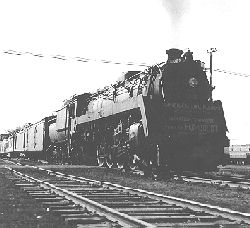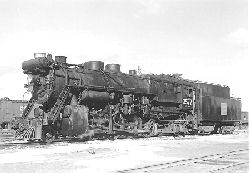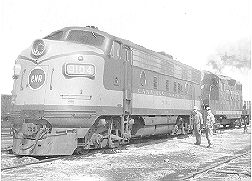



|
The Canadian National Railway reached Humboldt September 1904 with the first passenger train arriving in May of the following year. The CNR roundhouse was built in 1907 and torn down in 1967. It had a turntable in the front of the building to receive and move engines to the desired stall inside. It was equipped with 16 stalls, and after each run an engine was taken to the roundhouse for servicing or storage. In the 1920s, about 24 men were employed in the roundhouse for each of three days. Another part of the railway facilities in Humboldt was the icehouse. It was used to store the blocks that were put in the cold cars that held produce. The ice was also used to cool the drinking water on passenger trains as well as for air conditioning. Ice used was sometimes cut from Burton Lake and also Saskatoon, and delivered to the icehouse. There was also a coal dock in Humboldt to allow engines to take on fuel in this case coal. Engines could coal up from incoming or outgoing tracks as the coal dock was equipped with two shoots on either side. The railway water tower had its own water line to Burton Lake in the early days. The first tower was a wooden structure which was eventually torn down and replaced with a new steel tower built in 1923. The water town still stands today. Young men (some as young as 13 years of age) were hired as "call boys" for the railway. Their job was to call the train crews back to work. This included going to their homes |
at any time of the day to deliver the call. Most crews had about five members to be "called". The railway was very important as it was used not only for travel, but also to carry mail, supplies and other products. The railway was also a gathering place for people and helped to bring the country together. An incident reported about the service provided to passengers that was above and beyond the normal call of duty took place April 21, 1938. A young woman had gone uptown when the train stopped in Humboldt, leaving her baby on the train asleep. She was delayed and found the train had already departed when she returned to the station. Station employees wired ahead to the next stop Carmel and the train was held there until the mother arrived. She was driven to Carmel and arrived in record time, finding her child safe. The train was only delayed in Carmel for 10 minutes. Humboldt was also equipped with a stockyard with 15 to 20 corrals used for cattle, horses and pigs which had to be fed and watered. The train would have: 50 cars of cattle at any given time and it was not uncommon for two trains to arrive at the same time. Normally, the cattle trains would pull in on Saturday or Sunday as the cattle would have to be in Winnipeg by Monday for the sale. Dan McGinnes was the manager of the stockyard. CNR passenger trains 9 and 10 made their last run through Humboldt in 1963 and the last steam engine to travel through was on April 20, 1960. |
[ Home ]
Please send comments to Carlton Trail REDA Inc.
![]()
[ The Humboldt Journal ]
[ St. Peter's Abbey | Agriculture | Communities ]
[ Present-day Humboldt and Surrounding Communities ]
[ Language ]
![]()